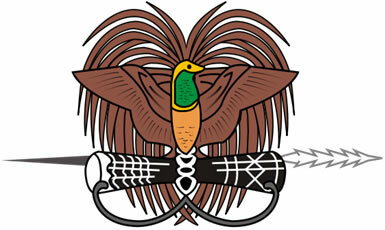Papua New Guinea, located in Oceania, occupies the second largest island on the planet (New Guinea), in addition to the Bismarck archipelago and several islands in Melanesia. Its territory is located north of Australia and has a single land border: Indonesia to the west.
The country has already been occupied by different nations: Spain, Portugal, Netherlands, Germany, United Kingdom, Australia and Japan. Independence was achieved in 1975 and the nation became part of the British Commonwealth – a bloc formed by the United Kingdom and its former colonies.
Some islands in Papua New Guinea are at serious risk of being submerged by rising sea levels caused by global warming. An example of this phenomenon was the removal of the population of the Carteret Islands, which became uninhabitable and, in 15 years, should be completely submerged.
Agriculture is responsible for capturing more than 70% of the economically active population in the country, especially the subsistence population. This fact influences the population distribution: most inhabitants live in rural areas (87.5%). The economy is based on the production and export of gold, copper, oil, coffee and cocoa.
With a Human Development Index (HDI) of 0.431, the country occupies the 137th place in the world ranking, which comprises 169 nations. Among the various socioeconomic problems are: most inhabitants live below the poverty line; the infant mortality rate is 49 for every thousand live births; environmental sanitation services are intended for less than 45% of households and the illiteracy rate is 45.8%.
Do not stop now... There's more after the advertising ;)

Coat of Arms of Papua New Guinea
Papua New Guinea data:
Territorial extension: 462,840 km².
Location: Oceania.
Capital: Port Moresby.
Climate: Equatorial.
Government: Parliamentary monarchy.
Administrative division: 19 provinces and one autonomous region (Bougainville).
Languages: English, English dialect and Motu (official), regional languages.
Religions: Christianity 94.8% (Protestants 54.6%, Catholics 29.1%, others 11.1%), traditional beliefs 3.6%, others 1.1%, no religion and atheism 0.5%.
Population: 6,732,159 inhabitants. (Men: 3,421,356; Women: 3,310,803).
Composition: 84% Papuas, 15% Melanesians, 1% others.
Demographic density: 14.5 inhab/km².
Average annual population growth rate: 2.3%.
Population residing in urban areas: 12.5%.
Population residing in rural areas: 87.5%.
Life expectancy at birth: 57 years.
Households with access to drinking water: 40%.
Households with access to the health network: 45%.
Human Development Index (HDI): 0.431 (low).
Currency: Kina.
Gross Domestic Product (GDP): 8.2 billion dollars.
GDP per capita: 953 dollars.
External relations: Apec, World Bank, Commonwealth, IMF, IMF, WTO, UN.
By Wagner de Cerqueira and Francisco
Graduated in Geography
Brazil School Team
countries - geography - Brazil School
